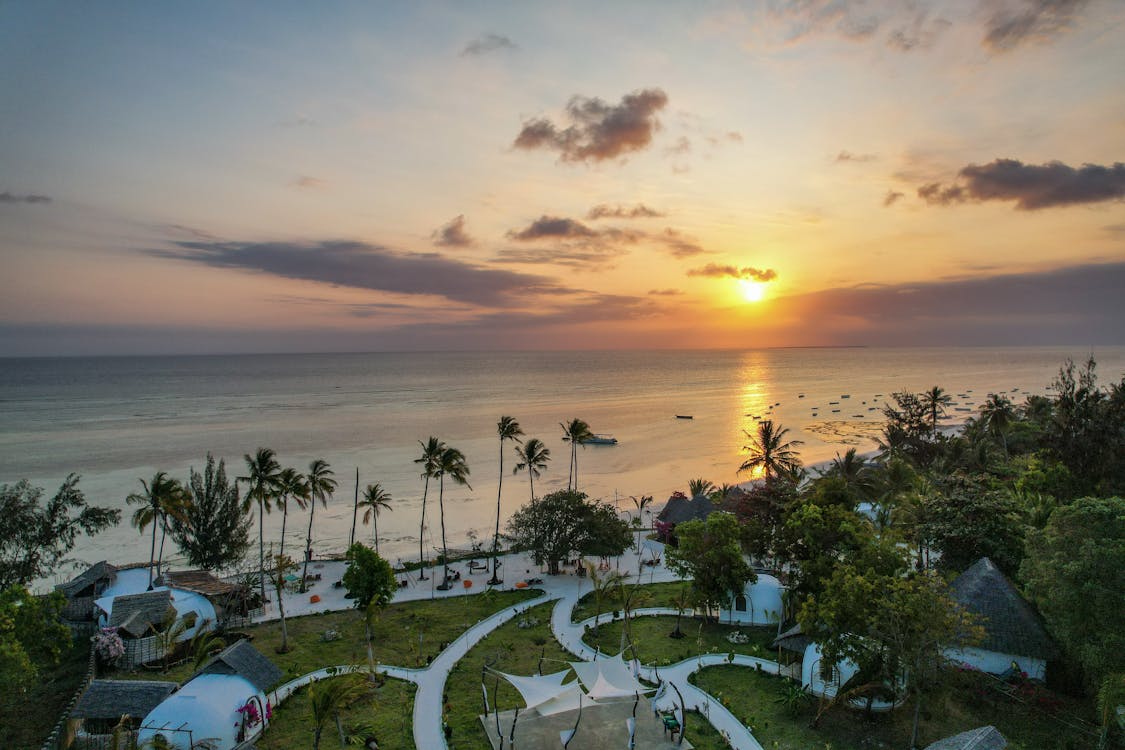
Zanzibar: Beyond the Beaches - Exploring Stone Town's Rich History
While Zanzibar's pristine beaches often steal the spotlight, the island's cultural heart lies in Stone Town, a UNESCO World Heritage site and a living museum of Swahili coastal trading culture. Walking through its narrow, winding streets is like stepping back in time, where centuries of trade, conquest, and cultural exchange have created a unique architectural and cultural tapestry.
A Cultural Crossroads
For centuries, Zanzibar was a crucial trading hub where Africa, the Middle East, India, and Europe converged. This history is reflected in Stone Town's architecture, cuisine, and people. Massive wooden doors with intricate carvings - some adorned with brass spikes originally designed to repel war elephants - mark the entrances to historic buildings. These doors often tell the story of their original owners through their designs: Indian doors feature floral patterns, while Arab doors display geometric shapes and Quranic inscriptions.
Historical Landmarks
Stone Town's most significant landmarks each tell a chapter of Zanzibar's complex history:
- The Old Fort: Built by Omani Arabs in the late 17th century on the site of a Portuguese chapel, this structure served as a defense against the Portuguese and rival Arab dynasties.
- House of Wonders (Beit al-Ajaib): Once the tallest building in East Africa, this former sultan's palace was the first building in Zanzibar to have electricity and an elevator.
- The Anglican Cathedral: Built on the site of the former slave market, the cathedral stands as a monument to the end of slavery in Zanzibar. The altar is positioned where the whipping post once stood.
- Tippu Tip's House: Home of the infamous Zanzibar slave trader who controlled much of the slave and ivory trade in Central Africa in the late 19th century.
The Dark Legacy of the Slave Trade
Zanzibar was once the center of the East African slave trade, with as many as 50,000 slaves passing through its markets annually. The Anglican Cathedral, built after the abolition of slavery in 1873, stands as a memorial to this dark chapter. Beneath the cathedral, visitors can see the cramped chambers where slaves were held before auction - a sobering reminder of human suffering and resilience.
A Culinary Melting Pot
Stone Town's food scene reflects its multicultural heritage. The night market at Forodhani Gardens offers a taste of local street food, from Zanzibar pizza (a stuffed crepe) to fresh seafood skewers. Spices - the source of Zanzibar's historical wealth - feature prominently in local cuisine, with cloves, cinnamon, black pepper, and cardamom adding depth to dishes like biryani, pilau, and octopus curry.
Freddie Mercury's Birthplace
Many visitors are surprised to learn that Freddie Mercury, the legendary lead singer of Queen, was born in Stone Town as Farrokh Bulsara to Parsi-Indian parents. His childhood home is now marked with a small plaque, a testament to the diverse backgrounds of those who have called Zanzibar home.
Preserving a Living Heritage
Despite its UNESCO status, Stone Town faces preservation challenges. Many historic buildings are deteriorating due to the harsh tropical climate and limited resources for maintenance. Organizations like the Stone Town Conservation and Development Authority work to balance preservation with the needs of the local community who continue to live and work in this historic area.
Experiencing Stone Town
The best way to explore Stone Town is on foot, preferably with a knowledgeable local guide who can reveal the stories behind the facades. Early morning or late afternoon walks offer relief from the midday heat and beautiful lighting for photography. Don't be afraid to get lost - some of the most charming discoveries happen when you wander off the main paths.
While Zanzibar's beaches offer relaxation, Stone Town provides cultural depth to your island experience. Its labyrinthine streets contain centuries of stories waiting to be discovered by those willing to look beyond the postcard-perfect shores.
Gallery

Click to view

Click to view

Click to view

Click to view
Reserve Your Luxury Escape
When you stay with Pamoja, you’re doing more than exploring — you’re helping conserve wildlife, uplift communities, and protect the environment for generations to come. Let your journey be part of something greater.
Check Availability

